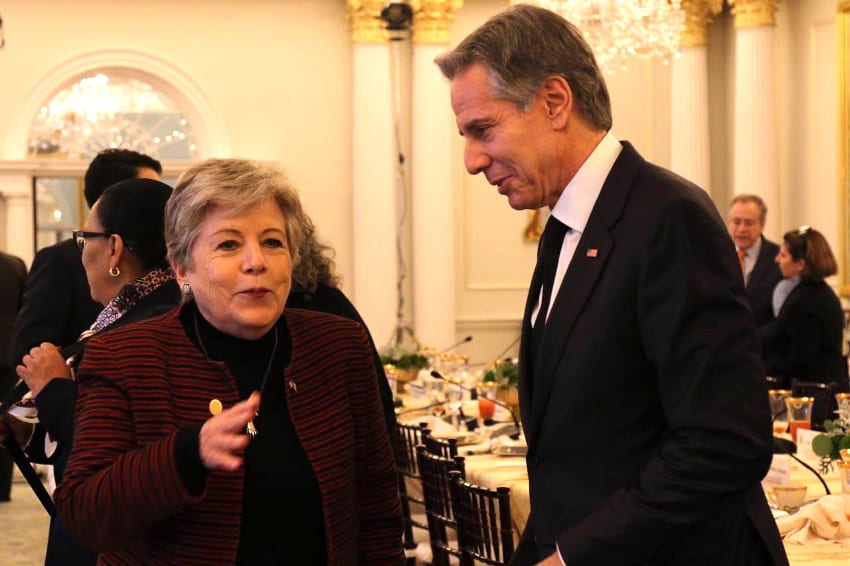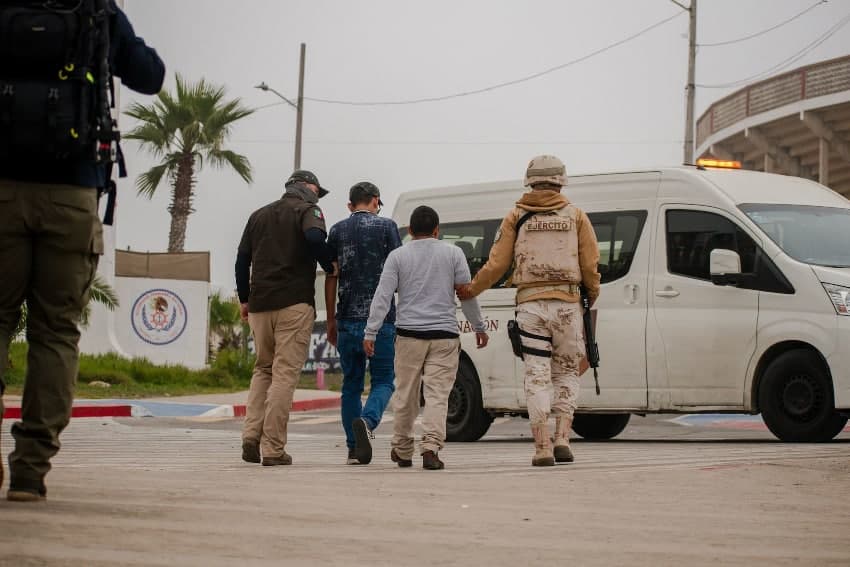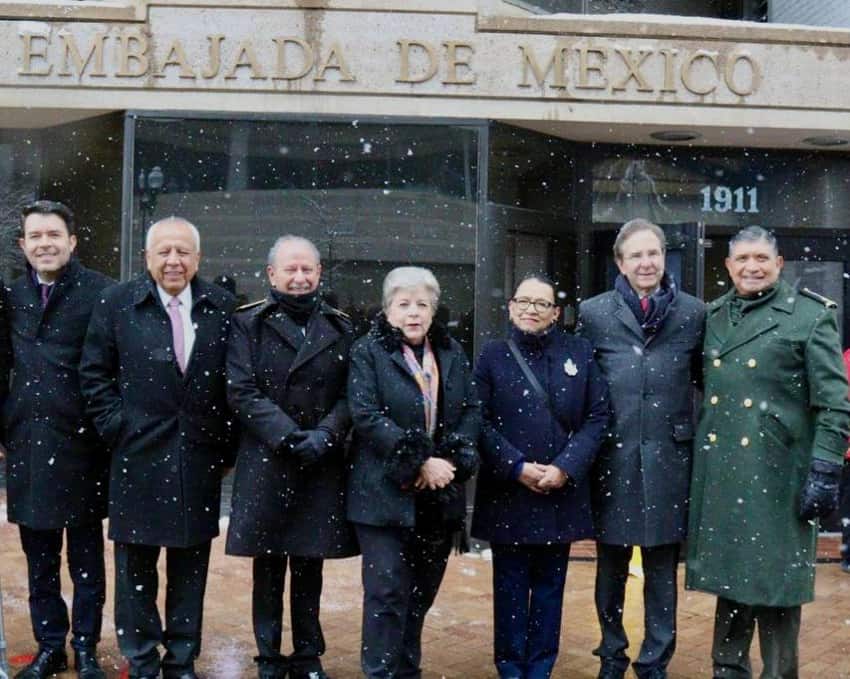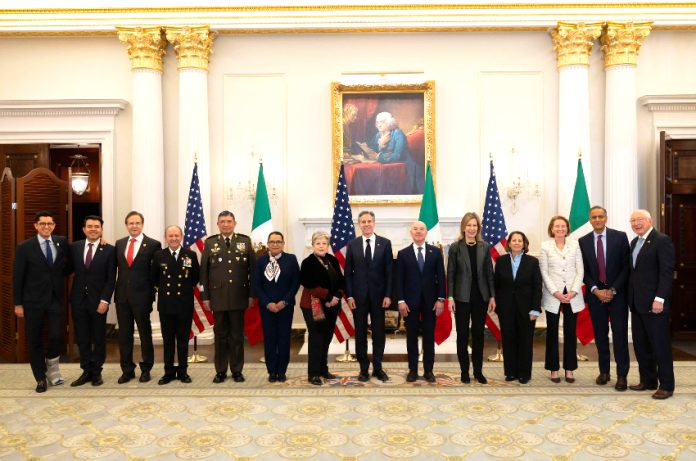The joint efforts of Mexico and the United States to reduce the number of migrants arriving at their shared border have yielded “positive results,” U.S. officials told their Mexican counterparts at a meeting in Washington, D.C. on Friday.
A delegation of senior Mexican officials led by Foreign Affairs Minister Alicia Bárcena traveled to the United States capital to meet with Secretary of State Antony Blinken and other high-ranking members of the Biden administration.

“During the meeting, Secretary Blinken and the U.S. delegation noted that our coordinated efforts with Mexico are demonstrating positive results at our shared border,” U.S. State Department spokesperson Matthew Miller said in a statement published Saturday.
The U.S. officials, including Secretary of Homeland Security Alejandro Mayorkas and White House Homeland Security Advisor Liz Sherwood-Randall, “discussed the positive impact of efforts to increase migration controls on bus and train routes, crack down on criminal smuggling networks, and scale up repatriations for those who do not have a legal basis to remain in our countries,” Miller said.
The meeting came three weeks after Mexican and U.S. officials discussed migration in Mexico City, after which they noted that their “ongoing cooperation” includes “enhanced efforts to disrupt human smuggling, trafficking, and criminal networks, and continuing the work to promote legal instead of irregular migration pathways.”
The United States closed several border crossings in late 2023 due to a surge in migrant arrivals, but four crossings opened in early January, a week after the migration meeting in Mexico City.

In December, U.S. Customs and Border Protection reportedly had over 300,000 encounters with migrants who crossed into the United States between official ports of entry, but numbers have declined so far this month.
AZPM, a southern Arizona affiliate of PBS and NPR, reported last Thursday that “the number of migrants apprehended in Border Patrol’s Tucson Sector last week was just over 9,000, which is less than half what it was a month before, when the sector was seeing record highs.”
CNN reported Jan. 12 that “the number of migrant encounters in Eagle Pass, Texas — very recently the epicenter of the migrant crisis — has dropped significantly, from thousands of apprehensions daily a few weeks ago to about 500 a day this week.”
It noted that the U.S. Department of Homeland Security had attributed a decrease in migrant encounters all along the 3,145-kilometer-long border with Mexico to:
- Enhanced enforcement actions by Mexico, including on trains and buses.
- Mexico moving migrants along the country’s northern border to the southern border.
- Mexico reinstating deportations of Venezuelans.
In an interview with AZPM, Ariel Ruiz Soto, a senior policy analyst at the Washington-based Migration Policy Institute, noted that Mexico ramped up deportation flights for Venezuelan migrants following the Dec. 27 meeting with U.S. officials, and added migrant checkpoints on its southern border with Guatemala and in other parts of the country.
After Friday’s meeting, Mexico’s Ministry of Foreign Affairs (SRE) said in a statement that Bárcena had “reaffirmed Mexico’s commitment to addressing the root causes of migration and promoting regular migration.”
The foreign minister “expressed appreciation for the joint work done with the U.S. to address the issue for the benefit of our peoples, and stressed the importance of working with other countries in the region to make migration safe, regular, orderly and, above all, humane,” the statement said.

The Mexican delegation, which also included Security Minister Rosa Icela Rodríguez and National Defense Minister Luis Cresencio Sandoval, also “highlighted the country’s great effort to address the root causes of migration, in particular, the development program in which US $180 million will be invested in Guatemala, Honduras, El Salvador, Colombia, Ecuador, Venezuela, Cuba and Haiti,” the SRE said.
The ministry added that the Mexican and U.S. governments agreed to conduct a joint visit to the Darién Gap “to understand the issue of migration in that region.”
The Darién Gap is a narrow, heavily forested strip of land that connects Colombia to Panama. Migration through the region has increased significantly in recent times.
Further north in Guatemala — a country that is both a source and transit country for migrants — new president Bernardo Arévalo took office last week.
The SRE said that Mexico and the United States “will seek a meeting with the new foreign minister of Guatemala to explore the best ways to strengthen our cooperation” on the issue of migration.
According to Miller’s statement, Blinken, at last Friday’s meeting, “highlighted the peaceful transfer of power in Guatemala as one of the most significant developments in the region since” the Dec. 27 migration meeting in Mexico City.
“In close collaboration with the Government of Mexico, the United States stands ready to support the people of Guatemala and their new government on a wide range of issues including economic development and hemispheric migration management,” the State Department spokesman said.
“… Migration is a hemispheric challenge. The United States is committed to work hand in hand with Mexico and countries across the region to address the root causes of migration and advance economic opportunities in the spirit of Los Angeles Declaration for Migration and Protection,” Miller added.
Mexico News Daily
